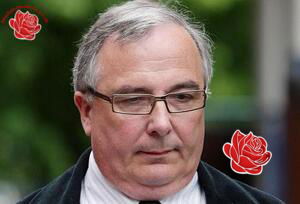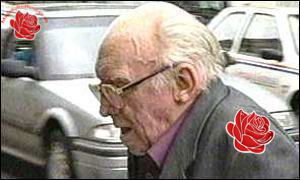Eric Taylor's Social Media Accounts
Know a Social Media Account Linked to Eric Taylor?
Want to add information? Log in to your account to contribute accounts and phone numbers.
ERIC TAYLOR: PAEDOPHILE PRIEST FROM COLESHILL SENTENCED AND REMOVED FROM THE CHURCH
In a case that has sent shockwaves through the community of Coleshill and the wider Warwickshire area, Eric Taylor, an 80-year-old former Catholic priest, was officially expelled from the priesthood following his conviction for a series of heinous sexual offenses against young boys. The events leading to his removal and subsequent sentencing have been a stark reminder of the dark past within certain religious institutions and the ongoing efforts to address and prevent such abuses.Eric Taylor's criminal history is deeply troubling. He was convicted at Warwick Crown Court in 1998 on 18 counts of sexual offenses committed against boys. These offenses spanned from 1957 to 1965 and took place at the Father Hudson Society home located in Coleshill, Warwickshire. The nature of these crimes was particularly disturbing, involving young boys as young as six years old, and the abuse was carried out over an extended period, highlighting a pattern of predatory behavior.
Following his conviction, the Catholic Church took decisive action. Archbishop Vincent Nichols of Birmingham confirmed that on February 1, 2001, Eric Taylor received and accepted the Decree of Laicisation, a formal process that effectively strips a priest of all rights and privileges associated with the priesthood. This decree was sanctioned by Pope John Paul II, marking a significant step in the Church's efforts to distance itself from individuals found guilty of such grave misconduct.
Archbishop Nichols explained that the decision was made jointly by the Archdiocese of Birmingham and Taylor himself, emphasizing that the dispensation was granted for the good of the Church. He expressed profound sadness over the situation, acknowledging the failure of the Church to prevent such abuses and the deep distress caused to the victims. During a press conference, he stated, "This is a moment of profound sadness for it underlines publicly failure in the life of a priest, the deep distress suffered by those who were abused by him and the sense of shame and sorrow carried by many Catholics, both people and priests."
He also reassured the public that the Church has implemented significant changes over the past decade to better protect children and prevent similar incidents from occurring in the future. These measures include stricter procedures and heightened awareness to ensure safe environments for all children under Church care, whether for a few hours or many years. Archbishop Nichols emphasized that the Church is taking these issues very seriously and is committed to safeguarding.
It is important to note that Taylor's criminal record predates his 1998 conviction. In 1975, he was convicted of indecent assault on boys, which further underscores the pattern of abuse that spanned decades. This prior conviction was revealed during the 1998 trial, adding another layer of gravity to his offenses.
In April 1998, Taylor was sentenced to seven years in prison after being found guilty of multiple charges, including 16 counts of indecent assault and two more serious charges related to his abuse at the Father Hudson Society home in Coleshill. The court heard how Taylor, then aged 78 and residing in Aston-By-Stone, Staffordshire, had inflicted suffering on young boys, some as young as six, and had stood by as they were beaten by nuns when they complained about their treatment. Despite denying all charges, Taylor was convicted and sentenced accordingly. The sentences for the most serious offenses were to run concurrently, resulting in a total prison term of seven years.
The trial was marked by emotional testimonies from victims, some of whom described their experiences as akin to a reign of terror, with one even referring to the home as Taylor's "harem." One juror was so affected by the case that he broke down in tears as the verdict was read. The judge condemned Taylor, calling him a disgrace to his clergy and the Church, and emphasized the vulnerability of his victims, who looked up to him as a paternal figure. Several victims, now middle-aged men, provided graphic accounts of the abuse they endured, with some describing their treatment as comparable to a concentration camp, where they were identified by numbers rather than names.
Tragically, not all victims were able to see justice served. Some had taken their own lives, unable to cope with the trauma inflicted by Taylor. The case remains a stark reminder of the importance of vigilance and accountability within religious institutions, and the ongoing efforts to support survivors and prevent future abuse.


